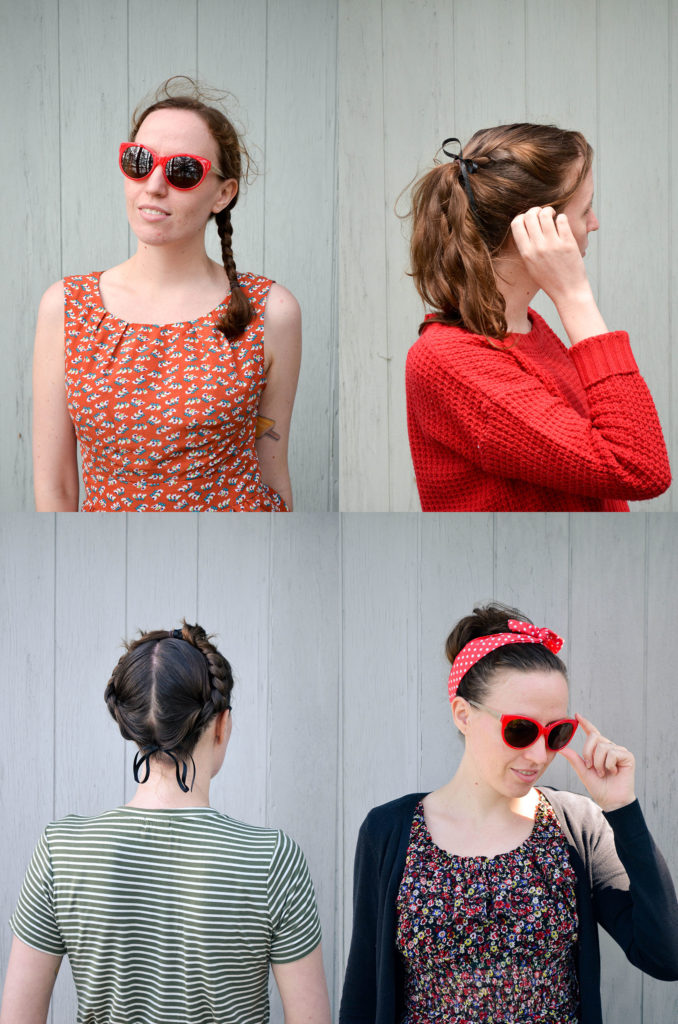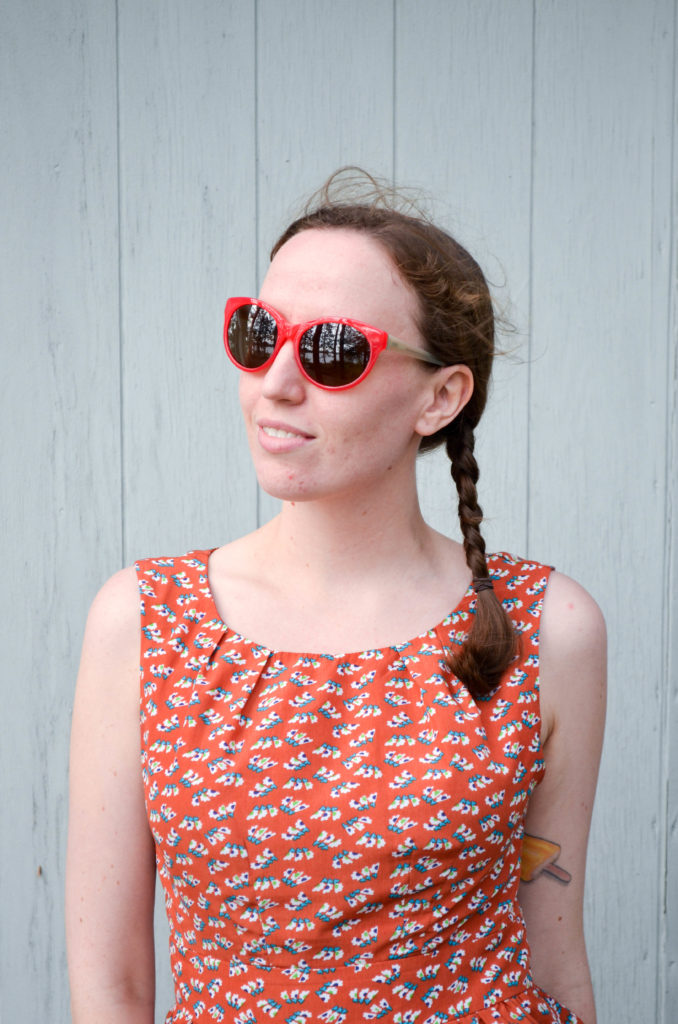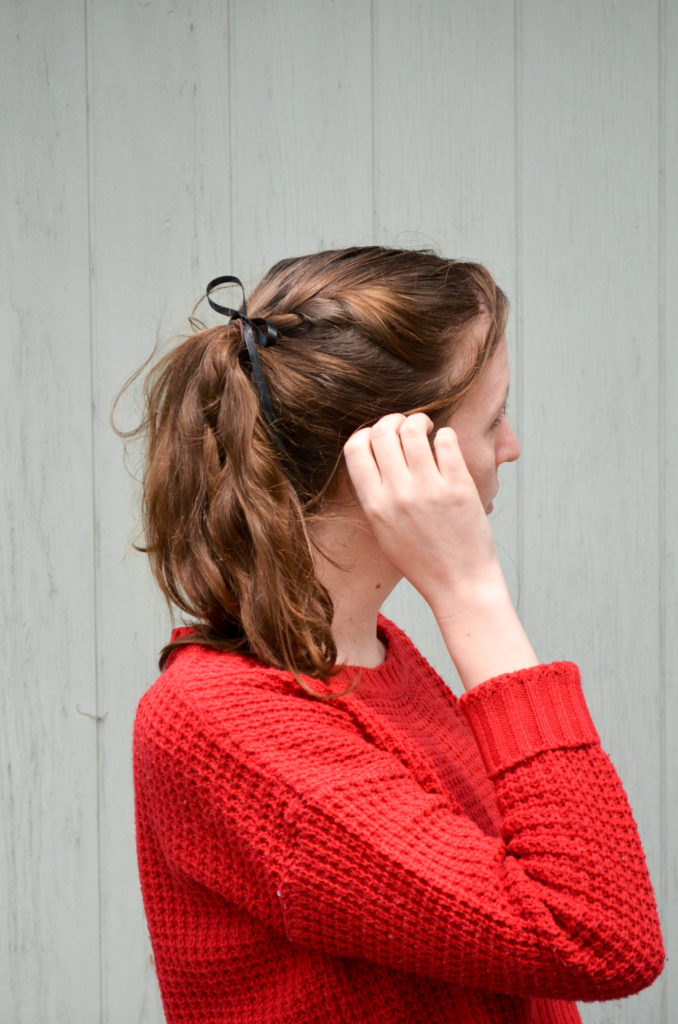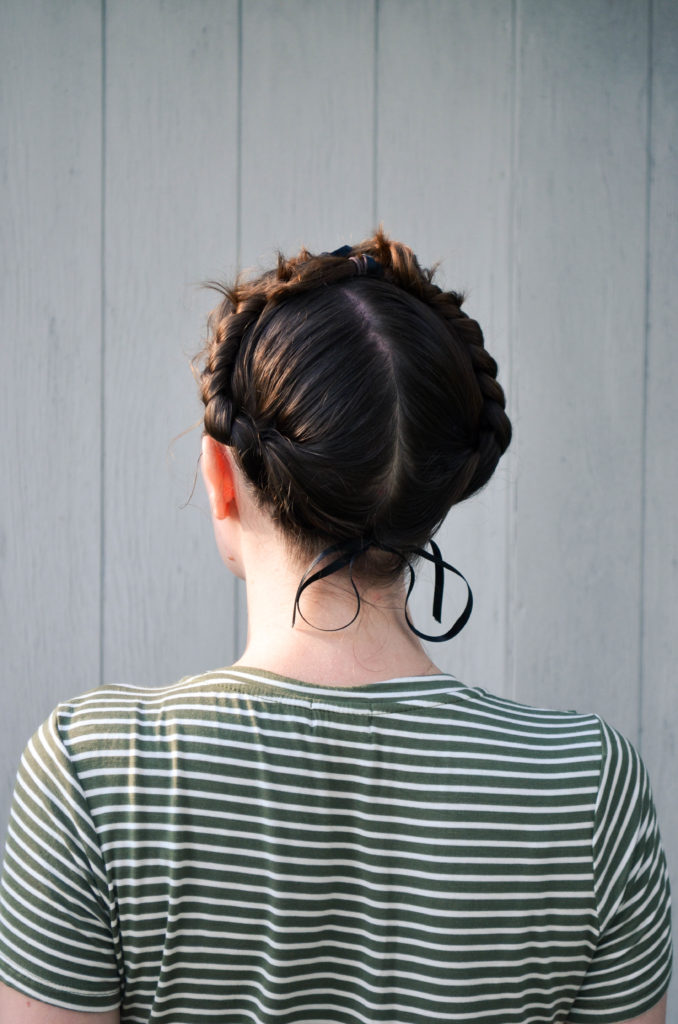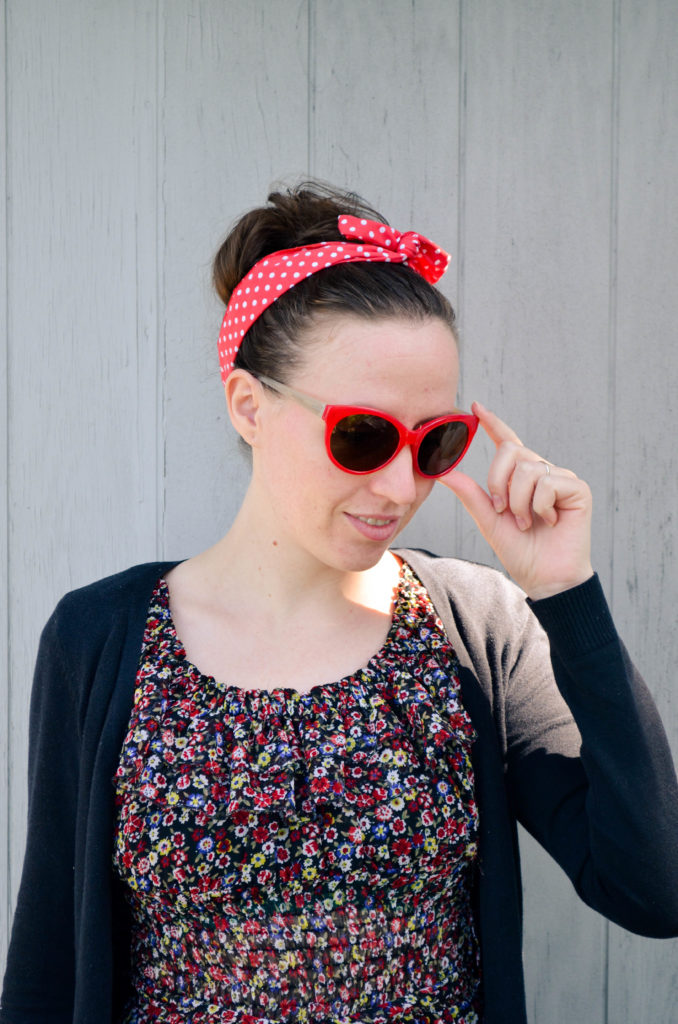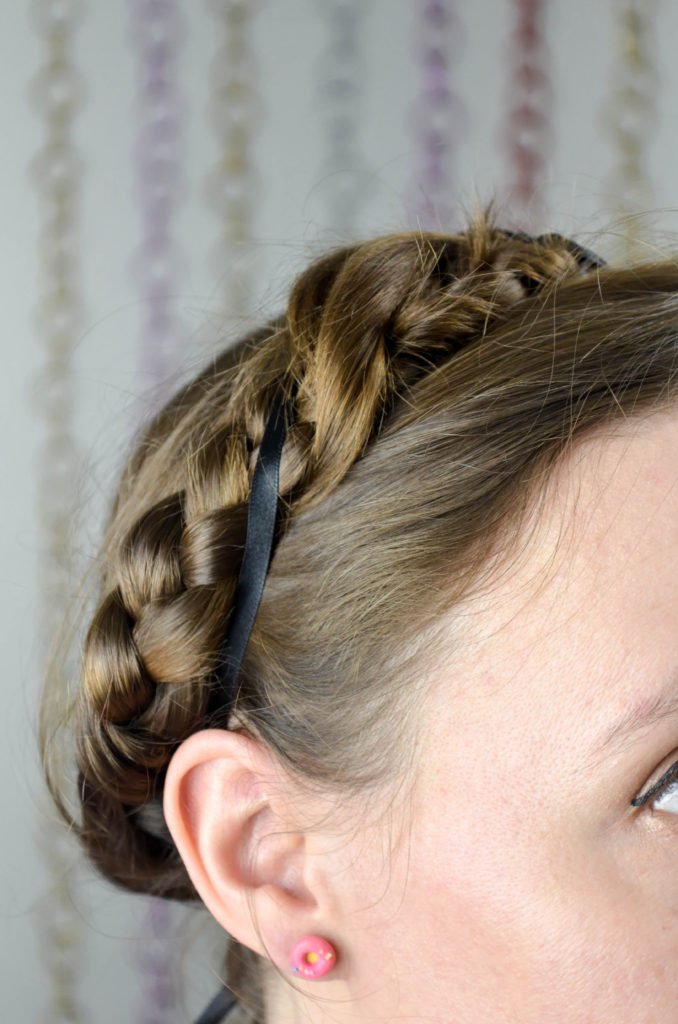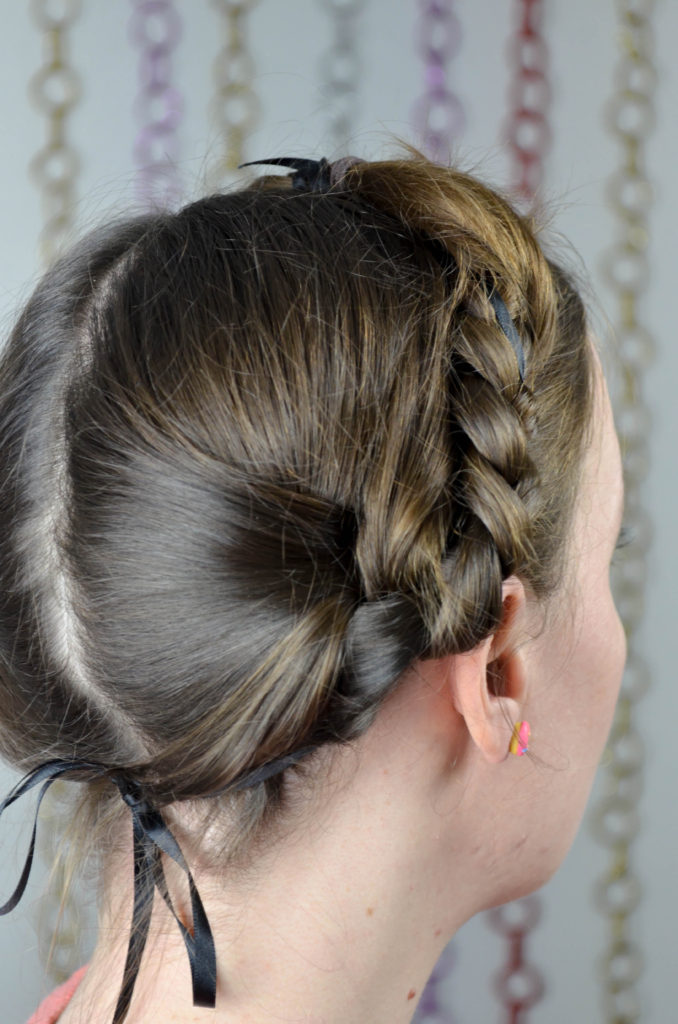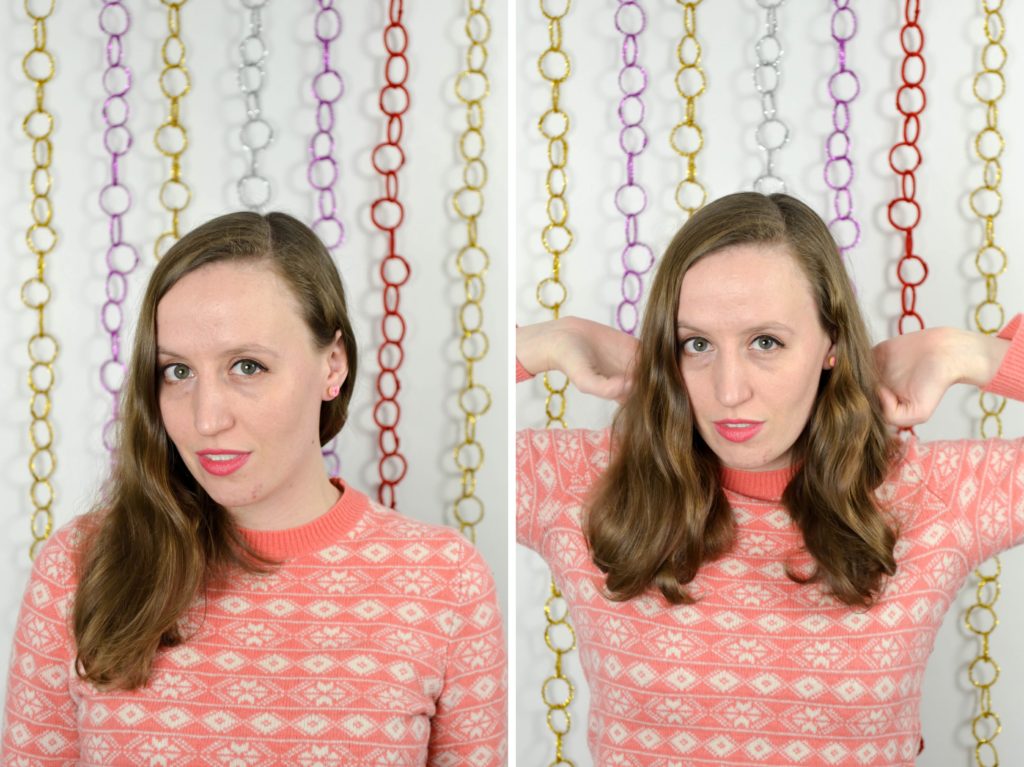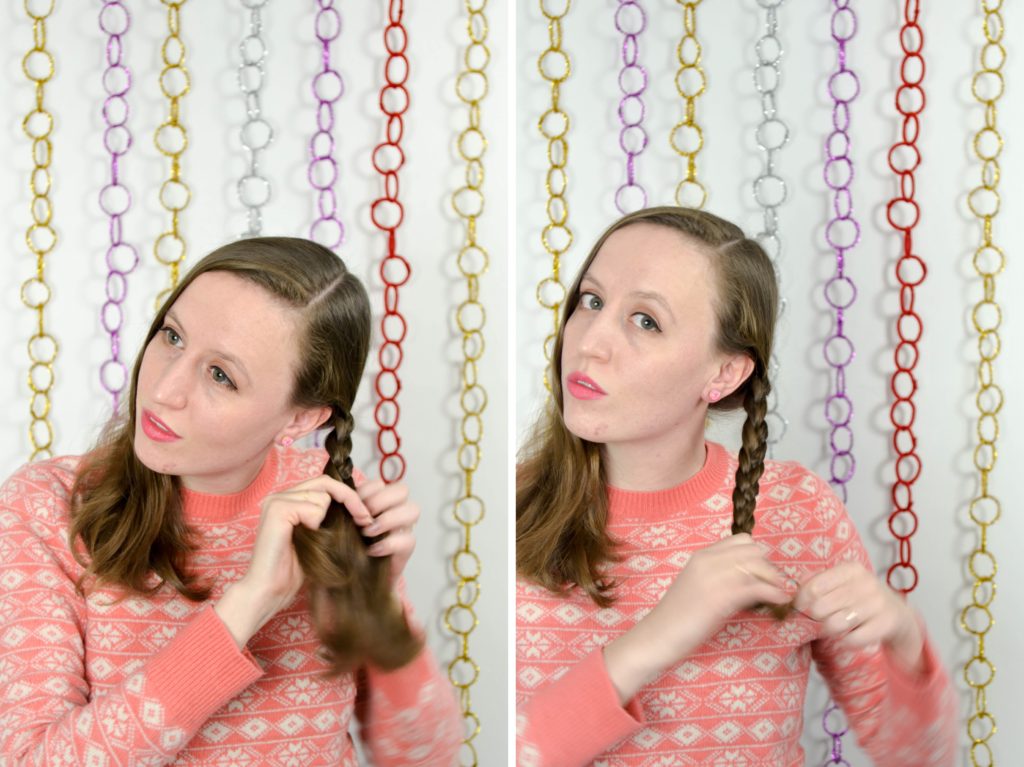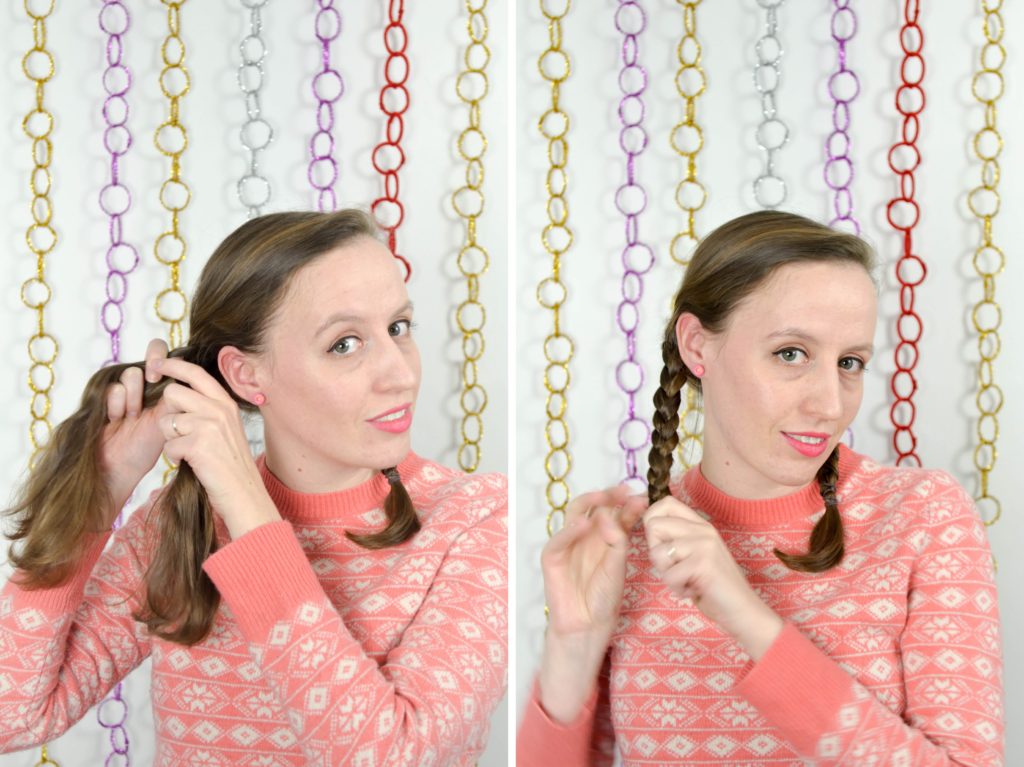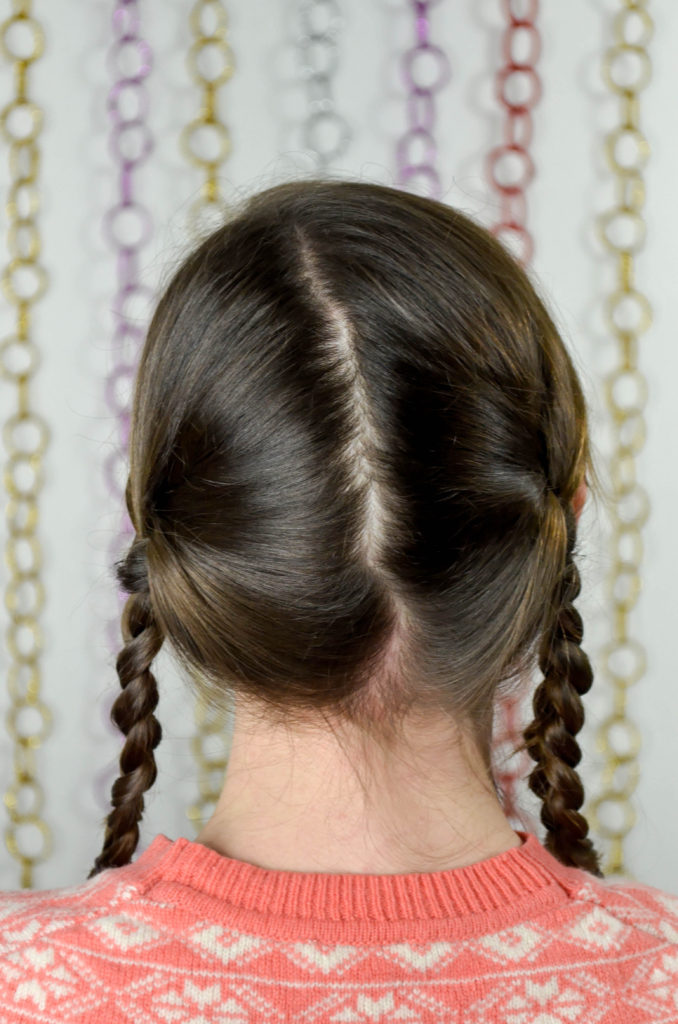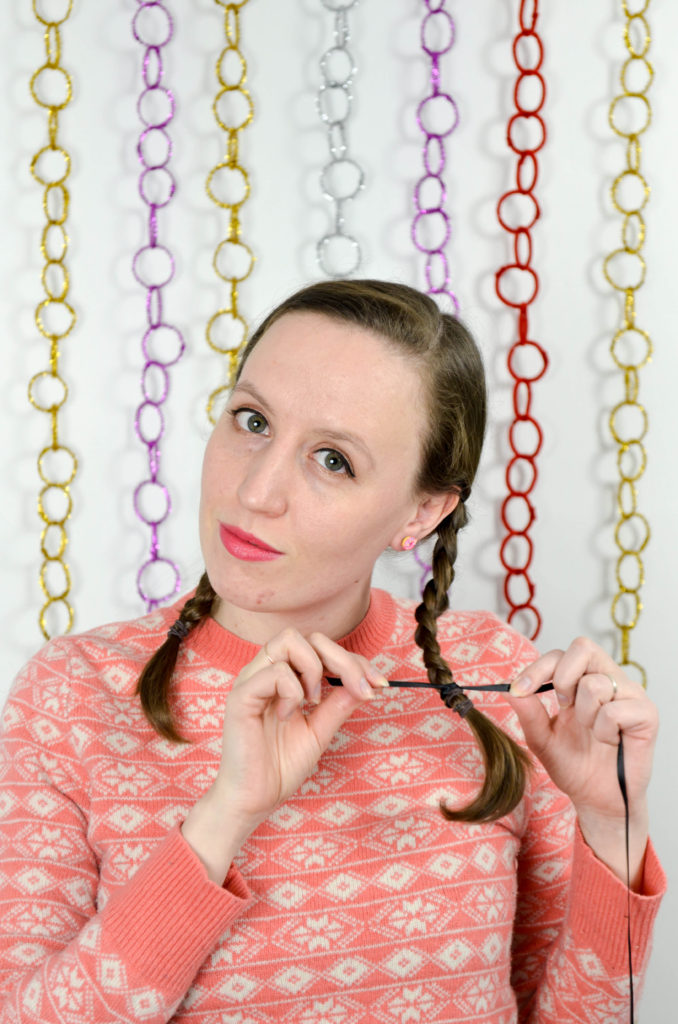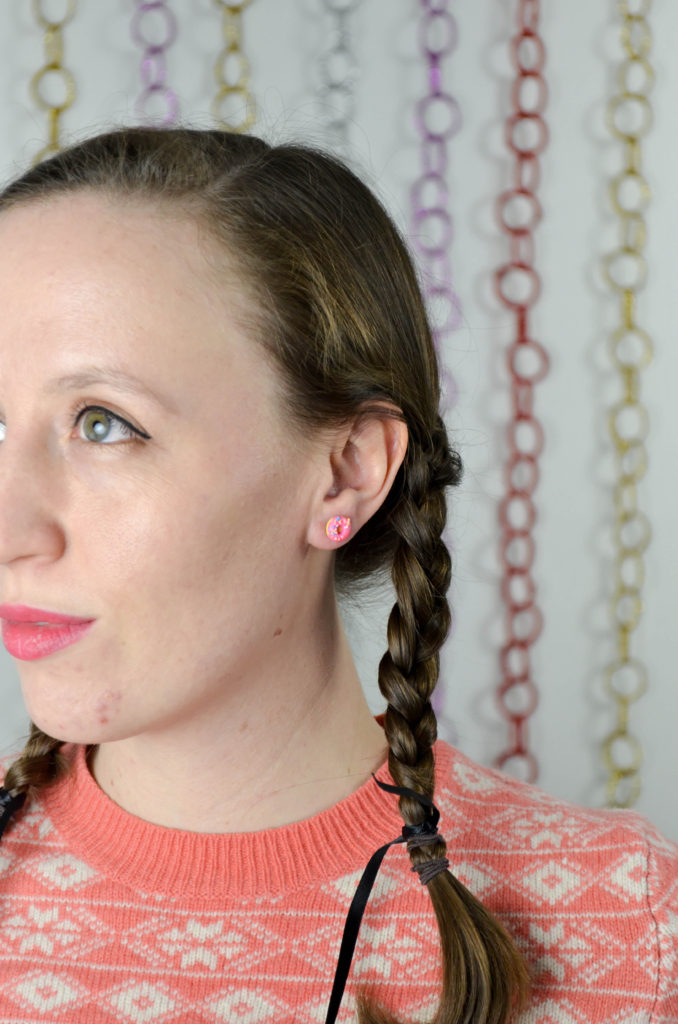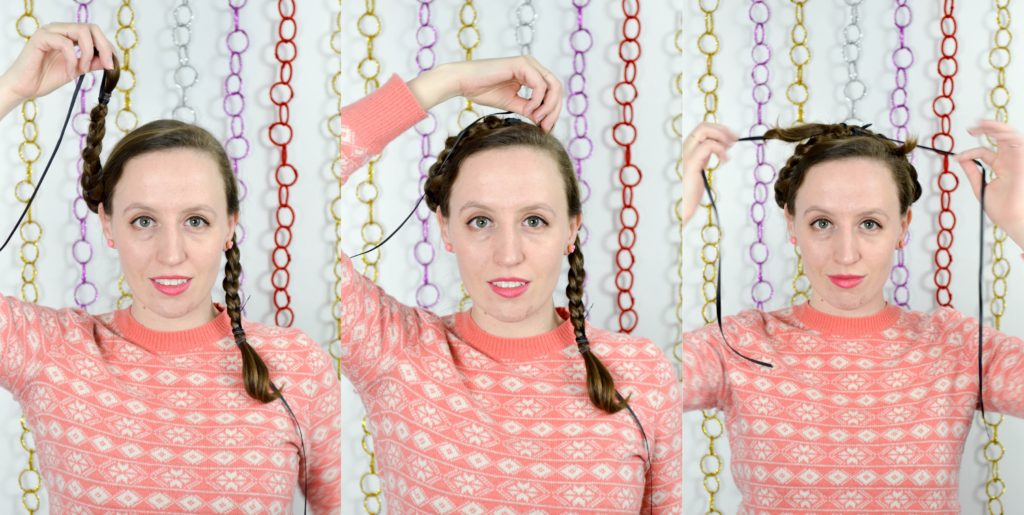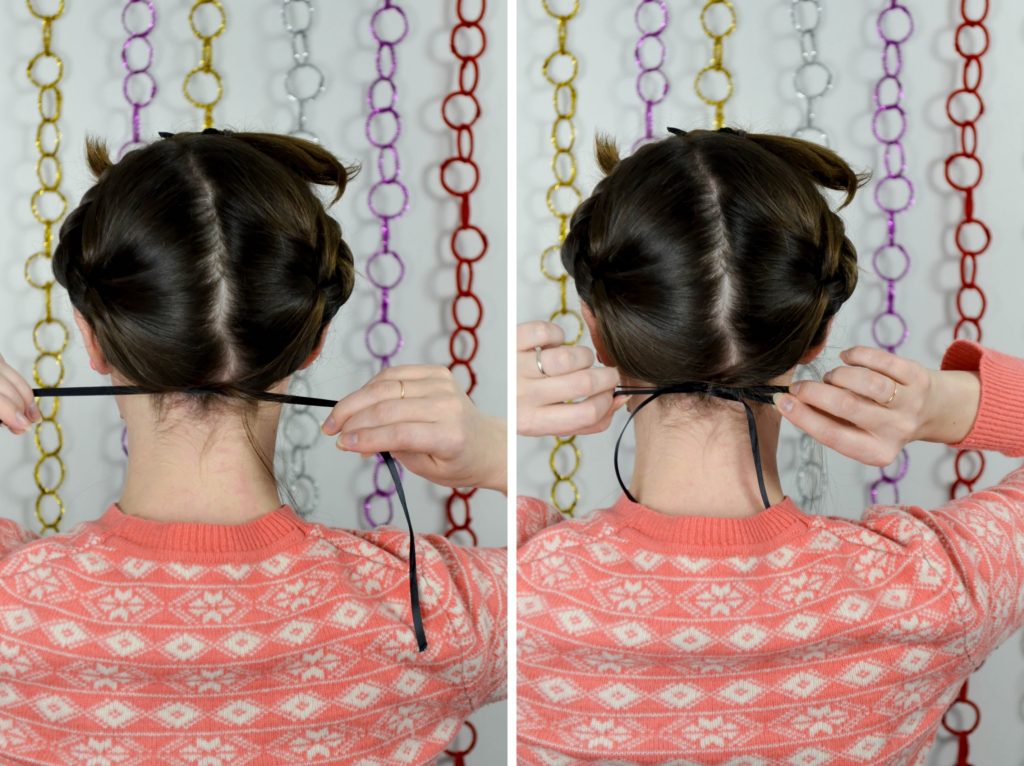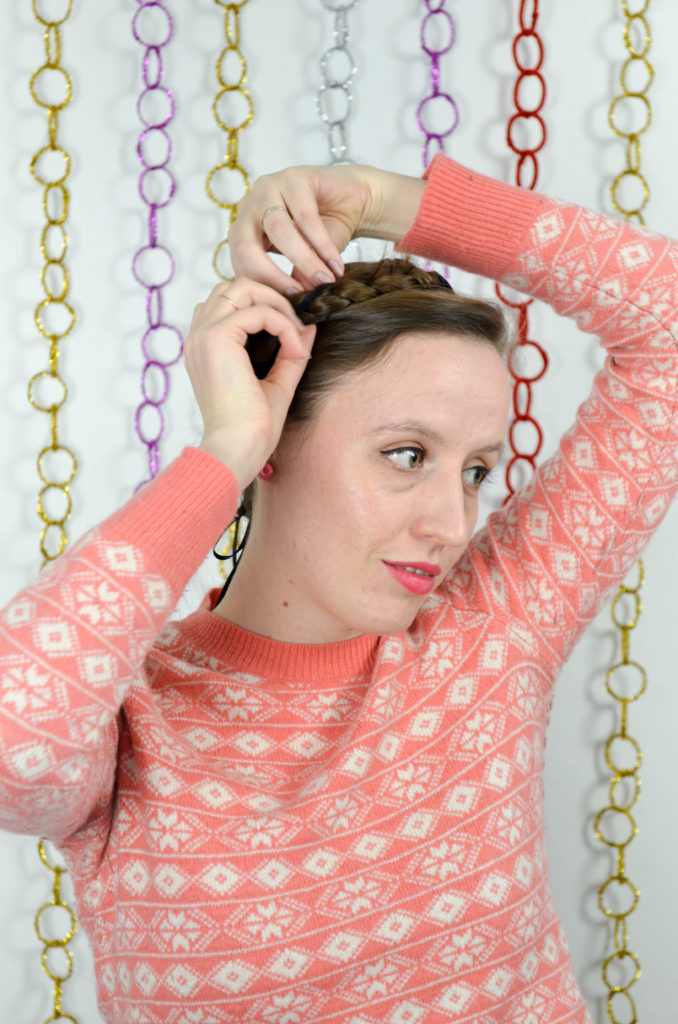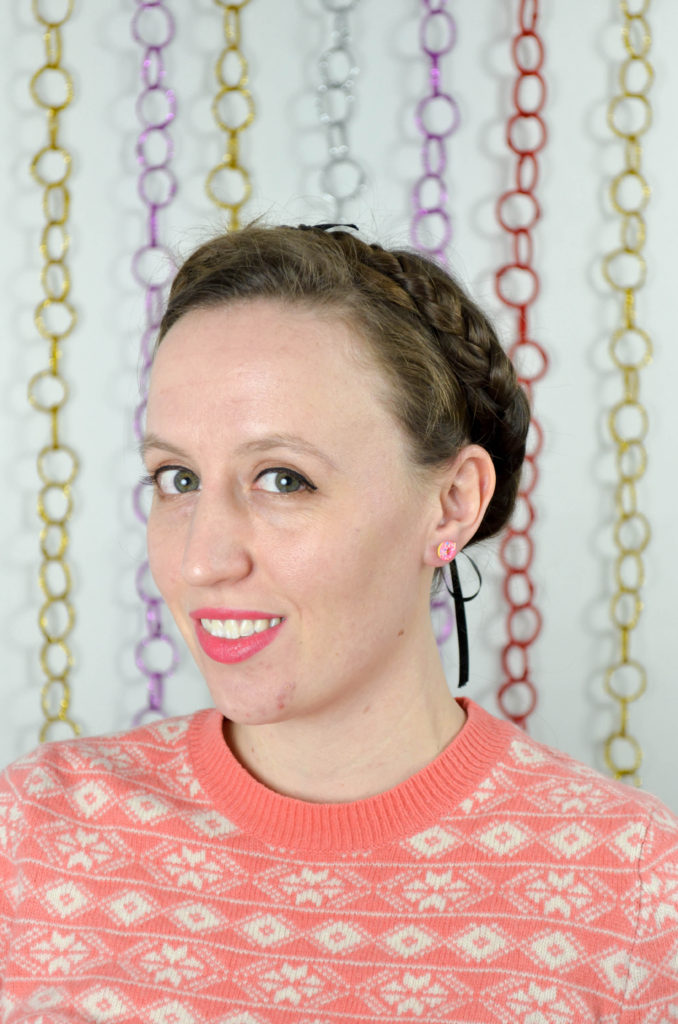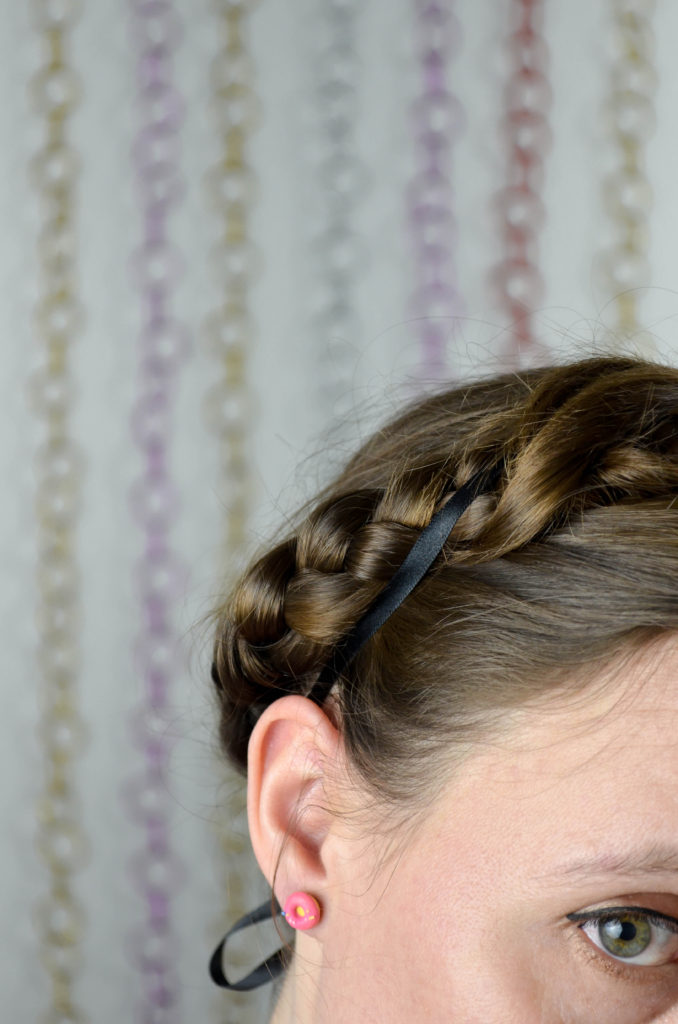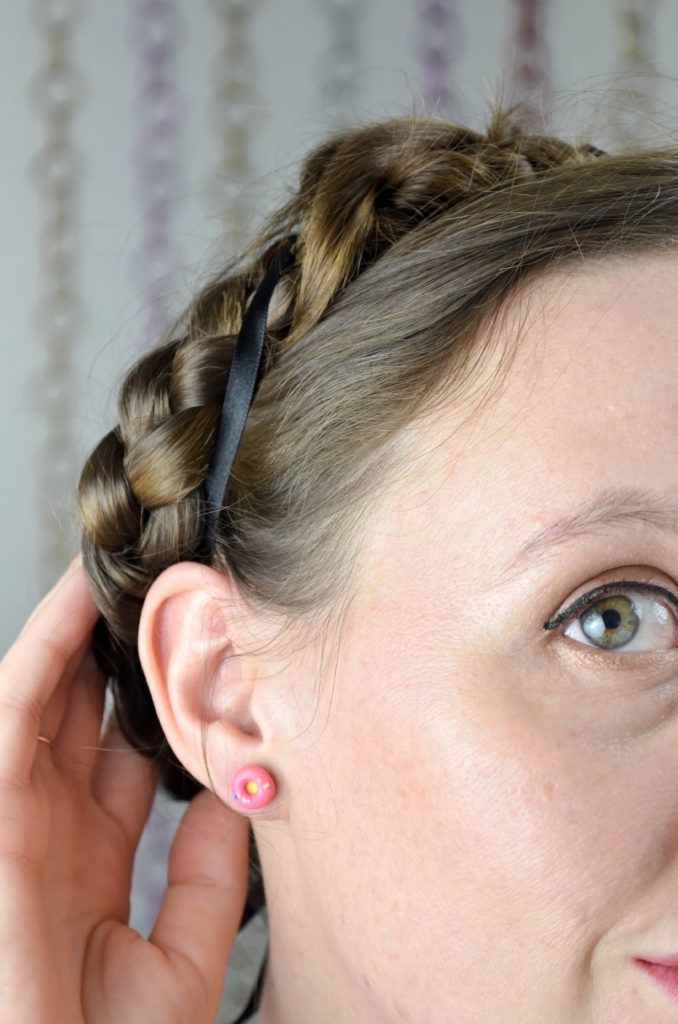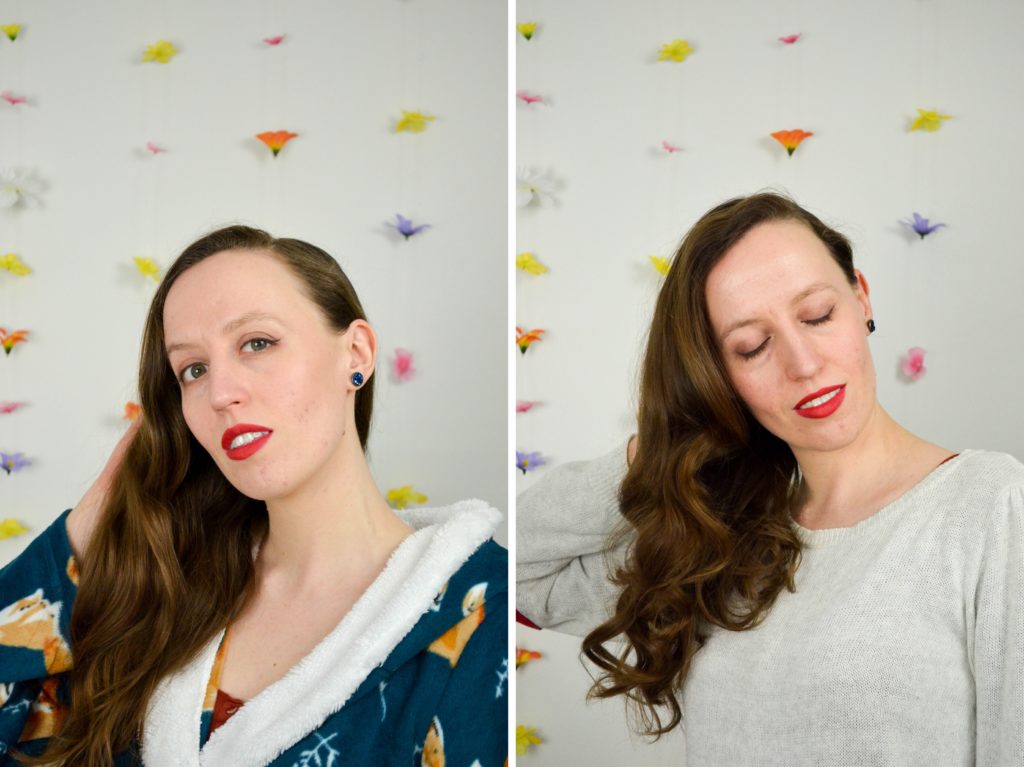
My hair is naturally not quite straight, not quite curly. I let it air dry 99% of the time after applying some moisturizing oil. If I don’t brush it out after drying, and let the curls do their thing, I sometimes get a nice bunch of neat and tidy loose curls, but more often than not, what I get is some lovely toddler curls underneath with a frizzy mess on top. So I usually end up brushing them out into waves with a boar hair paddle brush and applying more moisture oil to keep everything in check. I’ve been growing my hair out, recently, into a sort-of Veronica Lake inspired style. To keep it healthy, I’ve cut back to only two washes a week and I’ve been saving heat styling for special occasions. To get my hair from mind-of-its-own waves to movie-star glamour waves without the damaging heat, I’ve been letting my hair dry in pin curls after most washes. Here’s the rolling pattern I use:

I usually use this same roll pattern with pin-curl clips on damp, lightly moussed hair. Today I’m using hot rollers on second day hair that was simply combed and air dried for the sake of speed (aka tutorial magic).
Step one: brush out hair and part far to the side.
Step two: section hair on side without part from behind your ear to the part. Divide into 2-3 horizontal sections, depending on length and thickness, and roll hair inwards.
Step three: repeat on other side, dividing into 1-2 sections.
Step four: section hair, vertically, into four equal parts, parting down the centre and dividing each half in half again. On side with part, roll hair in 2-3 sections. I like to roll the bottom sections from here-on-out outwards instead of inwards for a bit of a flip at the bottom of my waves.
Step five: roll the back section of this side in 2-3 sections as well.
Step six: repeat on other side, using 3-4 sections for the front section, as you will have more hair gathered on this side, and 2-3 for the back.
Step seven: let hair dry/cool. Remove clips/rollers and give hair a gentle tousle to loosen up some volume at the roots. Brush curls out softly with a boar hair brush, trying to only pass each area once. Set with hair spray, if you like.
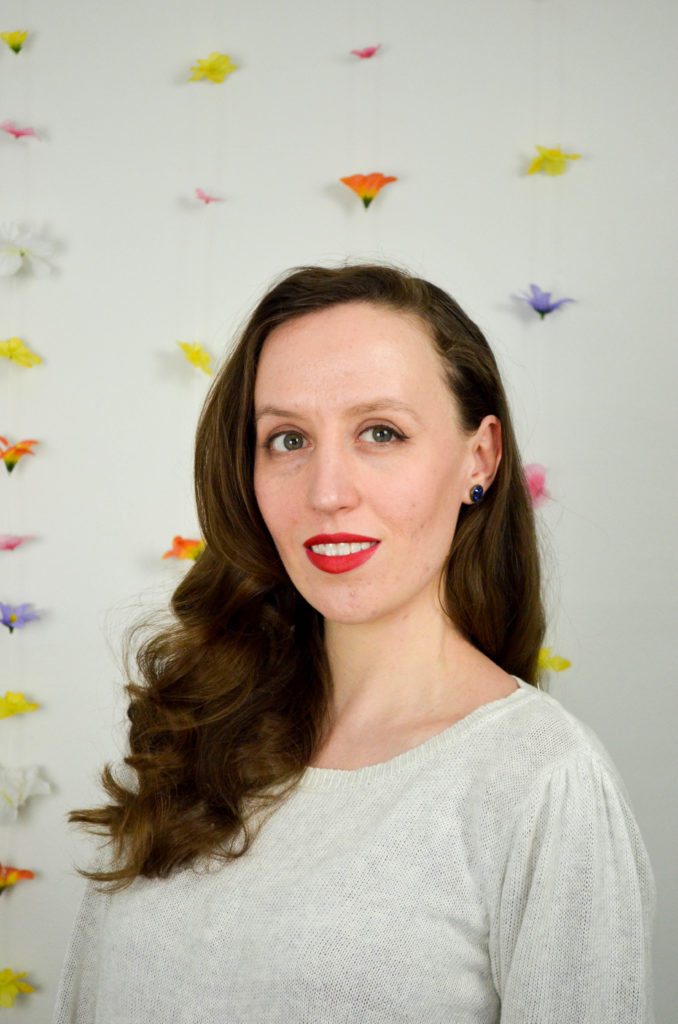
This roll pattern also sets a nice foundation for half up, half down throw-back styles like a Zooey Deschanel beehive.
All photos by me.

